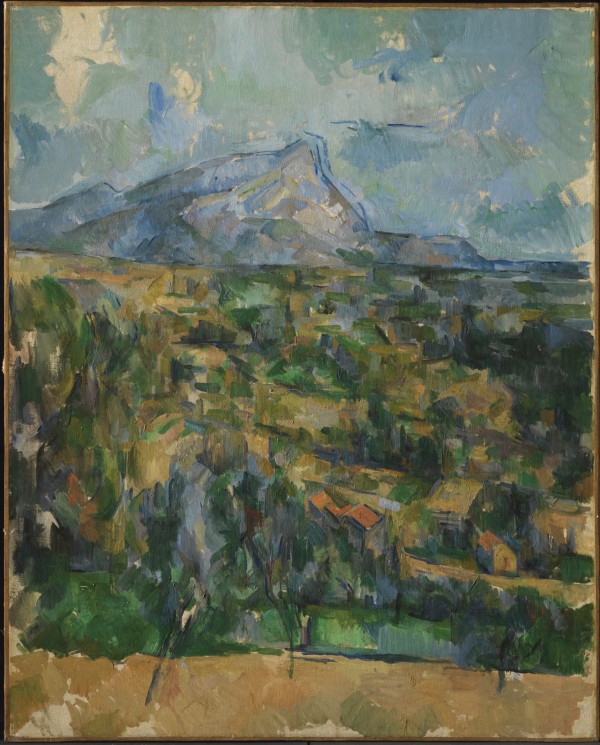Mont Sainte-Victoire (La Montagne Sainte-Victoire)
Mont Sainte-Victoire (La Montagne Sainte-Victoire)

About This Work
Provenance
Estate of Paul Cézanne. [Ambroise Vollard (1867–1939), Paris, by ca. 1904]. Purchased (possibly from Vollard) by Sir Victor Schuster, London, by 1936 and sold by Schuster at Sotheby's, London, 26 July 1939, lot 75, as The Montagne Sainte-Victoire Seen from the Chemin des Lauves; sold to Hoffmann, possibly a pseudonym. [Dalzell Hatfield, Los Angeles, by 1949]. Acquired by Henry Pearlman, by 1952; Henry and Rose Pearlman Foundation, after 1974.
Conservator's Note
The painting appears unfinished, with a horizontal band in the foreground probably representing a field, but this seems unresolved. As in his other paintings, Cézanne kept his palette simple, using a limited number of pigments, which were usually applied pure with little overlapping of strokes. To lighten the value of certain colors, he simply added white lead.
Critical Perspective
Mont Sainte-Victoire played an important role in the ancient history of Cézanne's native Aix-en-Provence. Its name refers to a Roman victory in 102 b.c. over Teutonic armies in the area.
Cézanne made more than thirty oil paintings of Mont Sainte-Victoire from different vantage points, the first in 1870. Toward the end of his life, he often painted it from sites near his last studio, built in 1902 on a hillside road across the valley from the mountain. Nearly all of Cézanne’s views of Mont Sainte-Victoire are horizontal. Here, the vertical canvas accommodates a deeper landscape.
